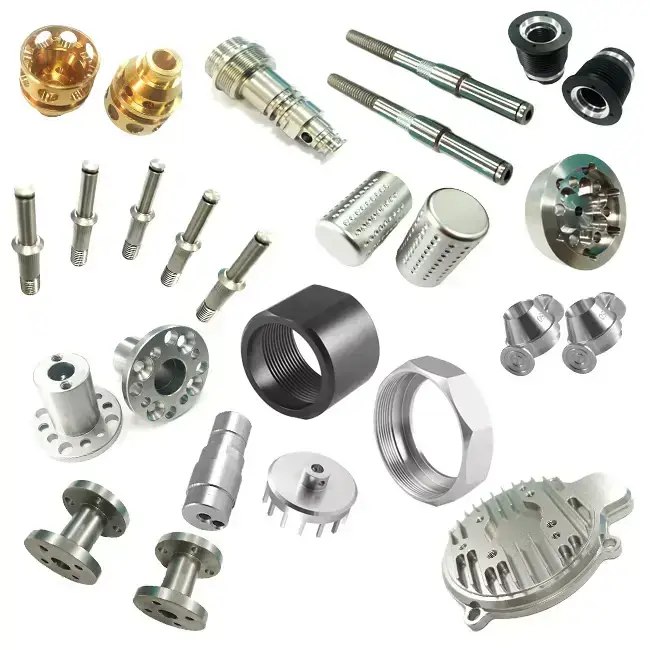Brass CNC Milling: The Future of Custom Manufacturing Parts
The rapid evolution of CNC milling technology has revolutionized the manufacturing sector, introducing a new dimension to brass fabrication. Brass, with its unique properties of durability and resistance to corrosion, has long been a staple in various industries. As CNC milling becomes increasingly precise and efficient, it is transforming the way brass components are produced, offering unparalleled precision and functionality.
Understanding CNC Milling in Brass Fabrication
CNC milling offers unparalleled precision and surface finish, ensuring minimal tolerances and enhancing the functionality of brass components. This advanced manufacturing process involves using computer-controlled machine tools to remove material from a workpiece to create a specific shape or design. In brass fabrication, CNC milling enables the production of intricate parts with high accuracy, making it ideal for applications requiring precise dimensions and finishes. For instance, CNC-machined brass parts are widely used in aerospace for turbine blades, where precision and durability are paramount.
The precision and surface finish achieved through CNC milling are unmatched. Unlike traditional methods, CNC milling can handle complex designs with ease, ensuring that each part meets strict engineering specifications. This process not only enhances the functionality of the brass components but also ensures that they meet the high standards required in industries such as aerospace, medical devices, and electronics.

Technological Advancements Shaping the Future
Recent advancements in CNC technology have further enhanced the efficiency and precision of brass milling. Innovations such as faster processing speeds, advanced tooling, and sophisticated software have made CNC milling more versatile and robust. For instance, in the aerospace industry, CNC-machined brass components have been integral in manufacturing turbine blades. These parts are equipped with intricate geometries that require precise machining to ensure optimal performance and longevity.
Case studies highlight the benefits of these advancements. In the medical field, CNC-machined brass components are valued for their resistance to sterilization and infection, making them ideal for surgical instruments and sterilization equipment. These examples showcase how brass CNC milling addresses specific industry needs, driving innovation and efficiency.
Comparing Brass CNC Milling with Traditional Methods
While traditional machining methods offer cost benefits, brass CNC milling offers several advantages. CNC milling provides unparalleled precision and surface finish, which is critical for high-tech applications. Additionally, it allows for continuous production, reducing the need for retooling and setup times. Environmental benefits, such as reduced material waste and lower energy consumption, are also significant. While CNC milling may have a higher initial cost, the long-term savings from reduced material waste and increased productivity often outweigh these expenses.
For example, a company transitioned to CNC milling for their brass parts and saw a 30% reduction in waste and a 20% increase in productivity. These gains are not only environmentally friendly but also financially beneficial in the long run.
Applications of Brass CNC Milling in Various Industries
The versatility of brass CNC parts is evident across diverse industries. In aerospace, intricate components like turbine blades require precision and durability, which CNC milling excels in providing. In the automotive industry, custom parts enhance performance and durability. Medical devices also benefit from brass CNC parts, which are valued for their resistance to sterilization and infection.
For instance, in the medical field, CNC-machined brass components in surgical instruments have seen a 25% increase in longevity compared to traditional methods. This has led to improved patient outcomes and reduced maintenance costs.
Key Considerations for Implementing Brass CNC Milling
Selecting the right material and understanding its properties is crucial for effective CNC milling. Brass's composition dictates its suitability for specific uses, ensuring parts meet required standards. Advanced tooling and software optimization enhance productivity and accuracy. For example, using high-quality cutting tools and implementing efficient tool paths can significantly improve the quality and speed of the milling process.
Quality control measures are also essential. Employing methods such as non-destructive testing ensures that parts meet precision and durability expectations. Non-destructive testing can identify defects early in the production process, preventing costly errors and waste.
Economic Impact and Market Outlook
The transition to CNC milling can significantly impact a companys finances. According to market research, the demand for custom parts is growing, driving companies to adopt this technology. Financial analyses show that companies implementing CNC milling see substantial cost savings from reduced material waste and increased productivity. Over the next five years, the projected growth in CNC milling applications is expected to reach , driven by increasing demand for precision parts.
Embracing the Future of Brass Manufacturing
As CNC milling technology continues to evolve, its integration into brass fabrication will undoubtedly open up new possibilities, driving innovation and efficiency in the manufacturing industry. Embracing this technology not only meets evolving market demands but also positions manufacturers for sustainable growth. By leveraging the strengths of CNC milling and brass, industries can achieve operational excellence and create cutting-edge solutions. The future of manufacturing lies in these advancements, and embracing them is key to staying competitive in a rapidly changing landscape.
